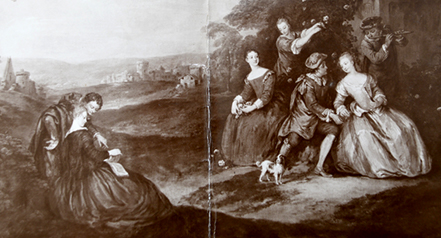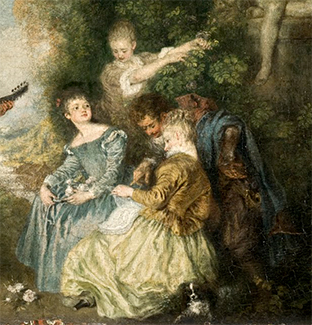
- Home Page
- Accepted
Paintings & Copies - Doubtful
Attributions - Doubtful Textual References
- Alternative
Titles - Collectors &
Museums - Bibliography
- Search Abecedario
- Watteau &
His Circle
X. Fête galante
Entered June 2020
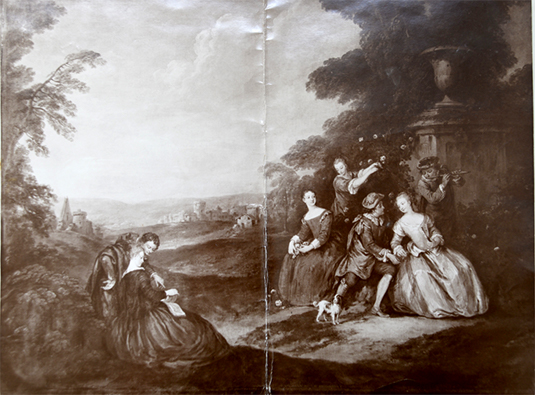
Whereabouts unknown
Medium unknown
Measurements unknown
REMARKS
This painting is known to me through a photograph on file at the Witt Library, London. An ascription to Nicolas Lancret on the library’s mount probably represents a modern idea, although probably the painting once bore an attribution to Watteau. Indeed, much of the painting is indebted to his art.
All four of the principal characters are derived from Watteau’s La Leçon d’amour, now in Stockholm. At the left, the woman reading the musical score and the man leaning over her shoulder are derived from that painting, as are the standing woman gathering roses and the woman seated beside her. The first two of those figures are in the same direction as those in the painting, whereas the two others are the reverse of the painted figures, as though they were taken from the engraving.
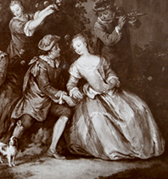
Anonymous artist, Fête galante (detail).
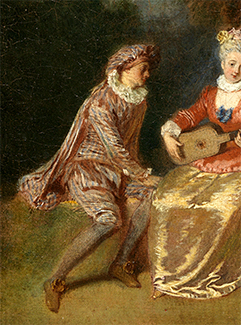
Watteau, Pierrot content (detail), oil on canvas. Madrid, Museo Nacional Thyssen-Bornemisza.
The origins of the man seated right of center can be discerned with less certainty. It would seem that his distinctive pose—his torso and legs inclined, his right arm crossing over to his left knee—is based on one of the figures in Watteau’s Pierrot content. But the pasticheur has changed the costume considerably, replacing the traditional striped costume of Mezzetin with a rustic one, including a floppy hat. His female companion is a fairly generic figure whose origins cannot be traced to a specific model. Likewise, the young flutist behind them, wearing a neck ruff, cannot be traced. These last mentioned characters convey little of the essence of Watteau’s art. In all probability, we should be casting the net farther, beyond Watteau to Pater.
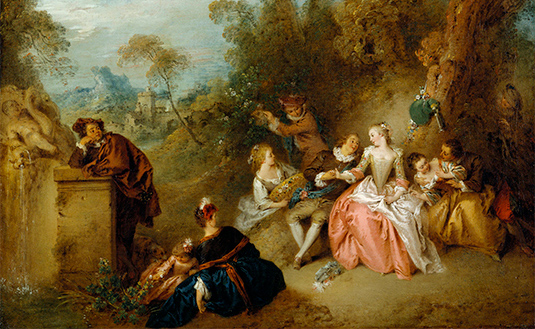
Jean-Baptiste Pater, Fête champêtre (detail), oil on canvas. Collection of H.R.H. the Queen, Buckingham Palace, London.
Certainly the painter of this pastiche knew Pater’s works. The way in which he has placed the woman left of center, reading a musical score, to create a repoussoir accent is one that that Pater often employed, as in his fêfe galante in Buckingham Palace.
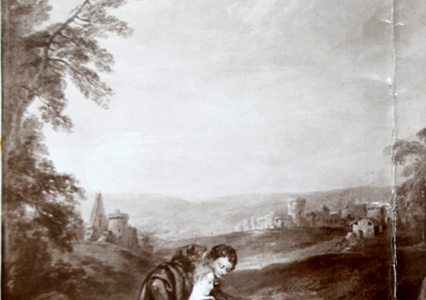
Anonymous artist, Fête galante (detail).
Another telling element in this pastiche is the distant landscape. It has nothing to do with Watteau but, rather, is wholly indebted to Pater. The buildings at the left—a tall, pointed structure and a round tower—are found in a good number of Pater's paintings. So too, the walled town is a motif often found in Pater's paintings. These specific leit motifs borrowed from Pater emphasize the eclectic nature of this pasticheur but do not help pinpoint when he was working. Was he active in the nineteenth or the twentieth century?
